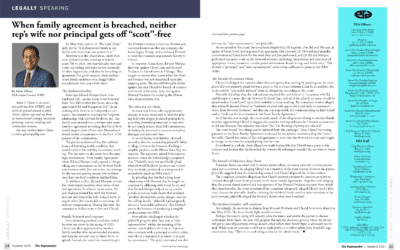The U.S. Department of Labor’s new rule, effective March 11, 2024, aims to clarify worker classification under the Fair Labor Standards Act. It defines “independent contractor” based on economic dependence, utilizing a “six plus one” factor test. These factors slightly favor an employment relationship. The Memoranda of Understanding between the DOL and various other state and federal governmental agencies streamlines investigations into misclassification, potentially leading to more audits and enforcement actions. Businesses should review their worker classifications to avoid penalties and litigation.
The U.S. Department of Labor (“DOL”) final rule addressing worker classification under the Fair Labor Standards Act (“FLSA”) went into effect on March 11, 2024. According to the DOL, the new rule is designed to “reduce the risk that employees are misclassified as independent contractors while providing a consistent approach for businesses that engage with individuals who are in business for themselves.”
The DOL rule defines the term “independent contractor” as workers who, as a matter of economic reality, are not economically dependent on an employer for work and are in business for themselves. The ultimate inquiry is whether, as a matter of economic reality, the work is economically dependent on the employer for work (and is thus an employee) or is in business for themself (and is thus an independent contractor).
To determine the economic reality, the DOL rule requires viewing the relationship under a “totality of the circumstances” standard and, in that regard, utilizes a “six plus one” factor test where no one factor is presumed to carry more weight than another. These factors appear below:
- The opportunity for profit or loss depending on managerial skill;
- The amount of investment by the worker and potential employer;
- The degree of permanence of the work relationship;
- The nature and degree of control over performance of the work and working relationship;
- The extent to which the work performed is an integral part of the potential employer’s business;
- The skill and initiative of the worker; and
- Additional factors.
The six identified factors skew slightly in favor of an employment relationship, which is consistent with the DOL’s historically pro-employee interpretation of prior court decisions on this subject. Existing court decisions, and not the DOL rule, will continue to control proper classification of workers, though the new rule will undoubtedly be relied upon as persuasive authority for federal courts considering the issues and shaping wage and hour law into the future.
It is worth noting that the IRS uses common law rules to determine if a worker is an independent contractor or an employee. Those rules fall into three categories—behavioral control, financial control, and the relationship of the parties—that generally examine the evidence of the degree of control and independence in the relationship between a worker and a business.
On December 14, 2022, the DOL and the Internal Revenue Service (IRS) signed and published a Memorandum of Understanding for Employment Tax Referrals (the “MOU”). The MOU establishes a system for referrals from the DOL and the IRS, which is designed “to assist in the identification of emerging and ongoing employment tax compliance issues related to misclassification.” The practical effect of this inter-agency agreement to cooperate is to streamline the process for investigating and penalizing businesses that allegedly misclassify their employees as independent contractors. The MOU makes clear that the IRS will target businesses that lack a good-faith basis for worker misclassification, which are more likely to be on the hook for substantial penalties.
The vast majority of state-level Departments of Labor (as well as a large number of municipal level agencies) have also entered memoranda of understanding with the DOL Wage and Hour Division in an effort to share information, facilitate access to employer and employee data, and coordinate misclassification investigation efforts. State agencies use their own varying tests for proper classification of workers (many states use the “ABC Test,” for example), which makes properly determining worker classification a complex issue.
With the implementation of the new DOL rule and the advent of increased coordinated government action, businesses may see an increase in the total number of audits by the DOL, which will likely result in more frequent government enforcement actions as well as litigation by employees. These developments could cause turmoil in the near future for businesses and industries that have historically relied upon independent contractors.
While the DOL rule change may have a chilling effect on a business’ willingness to engage independent contractors and gig workers, businesses that have properly classified workers in the past are likely already familiar with the controlling standards and should be confident in navigating the landscape going forward. We recommend that employers seize the opportunity to conduct their own assessment of their worker classifications in an effort to mitigate the risk of penalties and litigation resulting from workforce misclassification.
For additional information on this topic or other employment law matters, please feel free to contact Adam Maxwell at [email protected], or by calling (312) 648-2300.



